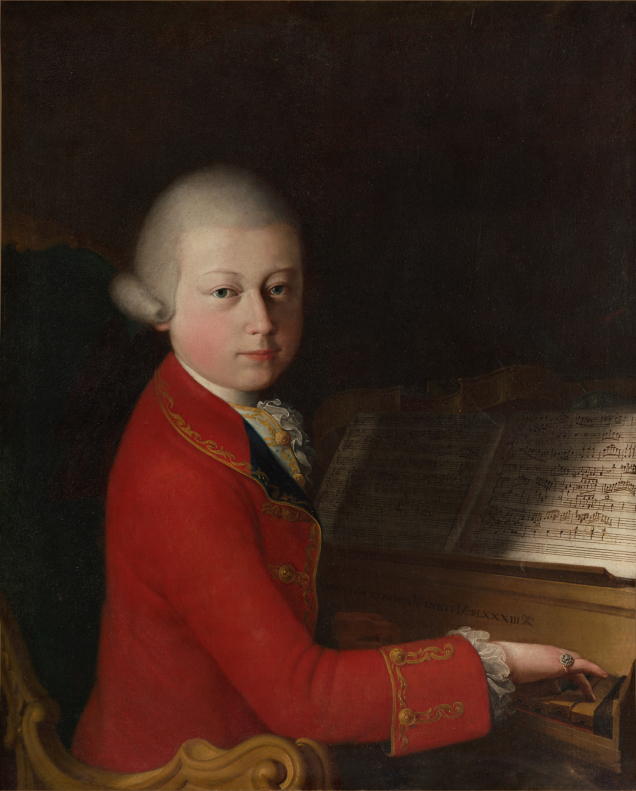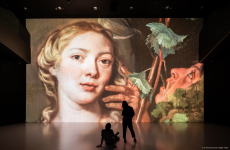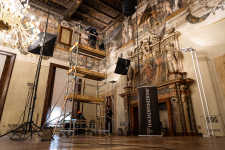The 1770 portrait of W. A. Mozart at the age of 13 by Giambettino Cignaroli is the most well known and recognized image of the young Austrian composer and it has been the center of local celebrations of Mozart in Verona since their first edition in 2020.
The portrait was displayed in a special exhibition in Verona from May 14 to October 10 of 2021, in the Sculpture Gallery of the Museum of Castelvecchio, born of an idea developed with the Cariverona Foundaton and the Philharmonic Academy of Verona. (The painting is owned privately outside of Italy.)
An ultra-high definition replica of the Portrait of W. A. Mozart at the Age of 13 Years was unveiled on Tuesday, January 11 at 5:30 PM in the meeting room of the Palazzo della Gran Guardia in Verona, to coincide with the fifth session of the 2021-2022 conference that the Municipal Museums of Verona are holding in collaboration with the University of Verona and the Friends of the Municipal Museums of Verona. The replica is the work of Haltadefinizione, a division of the publisher Franco Cosimo Panini Editore, while the frame, also an exact copy of its original, was made by the B. Restauro artist’s laboratory in Reggio Emilia.
Giorgio Fossaluzza, professor of Art History at the University of Verona, and Michele Magnabosco, librarian and conservationist for the Philharmonic Academy of Verona, was present new perspectives on the attribution of this work and its musical iconography, which may prompt further research. In conclusion, Luca Ponzio, the founder of Haltadefinizione, was describe the process of digital acquisition and 3D printing.
The painting has been photographed with a robotic device developed by Haltadefinizione and its partner company Memooria, which creates a three-dimensional map of the painting’s surface using digital imaging technology developed for the long-term monitoring of a painting’s conservation status.
This process reveals the material condition of the work and allows for three-dimensional reproductions with a degree of precision down to tens of microns. Once the data had been collected, a new kind of 3D printing was made possible, which reproduces the painting’s physical surface and colors, making a cloned copy identical to the original.
“We are very pleased to offer our contribution to the festivities honoring Mozart,” says Luca Ponzio, founder of Haltadefinizione. “One of our objectives is to make art more available to the general public, either with physical replicas or in digital display. This is why we work every day to develop new technologies for digital photography and printing.”
These three-dimensional models are an important source of data for researchers and curators to monitor the conservation status of works of art. They are also an innovative way to understand the works under study, by showing us the three-dimensional surface in a virtual model or by the production of physical copies.



